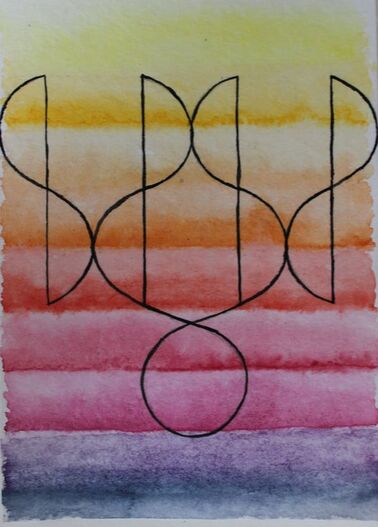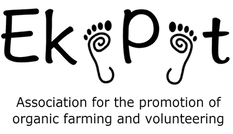 If there is no I. I see you. I am I and You are You. What about you? You see me. And you say:‘‘I am I and You are You.‘‘ What is the difference? The experience. But I don‘t want this experience. I want to experience everything. I want to see everything in its fullest form of existence. I want to see the world with all eyes in this world. I want to feel every sensation that is felt in this world. I want to experience everything that is experienced in this world. I feel restricted and unbalanced in my individual existence. I want to be more than just me. I want to do more than these hands can do. I want to think more than this mind can think. I want to nurture more than this soul can nurture. I want to be you, listening to the nightingale singing in the tree. I want to be the nightingale, singing in the early morning, watching the sun rising on the horizon. I want to be the sunbeam, reaching over the hill, warming the earth and the air. I want to be the wind, blowing over the land and the sea, moving and everything it touches. I want to be everything the wind touches. I am you and you are me. If you are everybody in this world, then there is no you and me anymore. There is just us. If we recognize that the self is not real outside of our perception we can be free. Free to be everything. Free to be united with all creations. All good qualities in this universe are the product of loving caring for the well-being of others, and all frustration and confusion of suffering are products and effects of selfish attitudes. But is it possible to trade yourself in for others? Our experience confirms that we can change our attitudes towards certain types of people that we previously found obnoxious and terrible; that when we get closer to such people and learn to understand them, we can change our attitudes and be different. Exchanging the ego with others does not mean that you physically transform yourself into others, but rather that you transfer the attitude you have towards yourself to others. The overly loving concern one feels for oneself should now be shifted to others so that one naturally tends to work for the welfare of others instead of one's own. There are two main barriers to developing such an attitude. The first is the strict distinction between the ego and the other: the ego and the others are viewed as completely independent and separate quantities. In reality, the ego and the others are relative, like "this side of the mountain" and "that side of the mountain". From my perspective, I am the me and you are the other, but from your perspective, you are the me and I am the other. We are naturally indifferent because we feel that the happiness and suffering of others are none of our business; they are irrelevant to us. Then we need to remember that there are certain types of people, such as our loved ones, whom we love very much. Your loved ones are not you, but the happiness and suffering they experience touch you. We also treat our own body with great value, regardless of the fact that it is made up of many limbs - head, hands, legs. In the same way we should look at what unites us, the common trait shared by all sentient beings, the natural desire to achieve happiness and avoid suffering. Dalai Lama - The Path to Freedom; p. 158-159
0 Comments
When I was little me and my mom used to go out and pick elderflowers when their flowers where shining white against the summer greenness. Since we lived in a city It was always a thrilling adventure to go out and find just the right elderflowers trees cause we needed to be able to reach the flowers and preferred if the trees where not growing to close to a major road. When we picked the flowers my mom always said that it is important to say thank you to the tree and say what we are going to use its flowers for, which I still try to do while harvesting from nature. After we picked the flowers we put them together with sliced lemons and lemon juice in a bucket and boiled together sugar and water. The sugar-mixture were later pored over the flowers while till hot. The bucket was then kept in a cool dark space and was being stirred twice a day. After three days we put the mixture through a strainer and into glass bottle and enjoyed an amazingly tasting elderflower-syrup. This is our traditional way of making elderflower-syrup and when I saw the beautiful trees here I immediately wanted to do it here as well. I used smaller jars instead of a bucket and the syrup turned out really good. Below are the quantities of all ingredients.
30-40 elderflower flowers 4 lemons 1 1/2 l water 1 l sugar INGREDIENTS:
INSTRUCTIONS:
|
AuthorWrite something about yourself. No need to be fancy, just an overview. Archives
November 2021
Categories |
